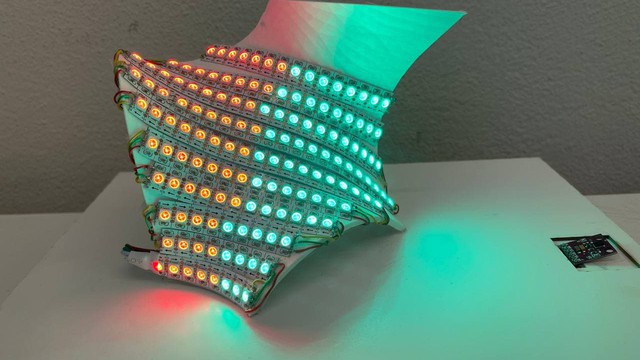Cabinet Of Infinity 2021, Germany, Weimar
Innovative interactive installation/ Freeform interactive pavilion




Our design project aims to provide visitors with a joyful and interactive experience that uniquely and innovatively showcases the "Museen im Schloss Friedenstein Gotha" in Germany's art collections.
Our team was tasked with a project to create an interactive installation that would showcase the art collections of the "Museen im Schloss Friedenstein Gotha " in Germany. The primary aim was to inspire people to visit the museum by presenting the artworks in an innovative and engaging way. To achieve this goal, we designed a pavilion that combined the decorative elements of baroque architecture with modern technology. The pavilion was designed to display four different categories of art pieces, including sculptures, paintings, patterns, and objects. We utilized a 3D printer to create a portion of the structure, and we attached an addressable LED strip to the double-carved surface to create spatial effects. Alternative Development Process In order to find a form that best fits our design goals, we have used six minimal surface equations to develop a variety of alternatives. Four modules that, both aesthetically and functionally, could fulfill the design were finally chosen. Although it was challenging to solder and attach the LEDs, we were able to program them using an Arduino and sensors. We also connected the Arduino to the Touch Designer software, which determined the combinations and spatial effects of the displayed pictures. The LED screens provide visitors with an interactive experience to explore the displayed photos by zooming in and out and sweeping them in different directions. When the space is unoccupied, a standby mode picture will be displayed, and a motion detector will sense a visitor's presence, triggering the display of a photo collection on the interior surface. Our team deliberately chose not to use pure pictures of the museum's artwork to create a sense of curiosity and encourage visitors to visit the museum themselves. The prototype we created is not in the actual size of the pavilion, and the displayed images only show colors rather than recognizable pictures. However, in the final product, the displayed images will be recognizable, although they will have a slightly vague appearance.
Poster
Details
Team members : Faezeh Mansourkhaki, Zeinab Rahimi
Supervisor : Supervision: Prof. Bernd Rudolf, Prof. Andreas Kästner, Junior Prof. Reinhard König, Dr. Sabine Zierold, Brian Larson Clark,Nezar Abuhalaweh
Institution : Bauhaus University Weimar
Descriptions
Technical Concept : The technical difficulties that we faced: 1- Form finding: for this purpose, we used Grasshopper and equations of minimal surfaces that are ruled surfaces, and although they are complicated, but possible to build them as they are ruled surfaces. 2- Attzching LEDs and soldering them on double-curve surfaces. 3- coding LEDs while not ordered linearly and attached to a surface without a simple border.
Credits
Designers
Designers
Designers
Designers
created by Zeinab Rahimi
created by Faezeh Mansourkhaki